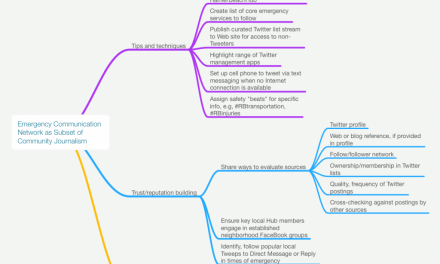In a recent tweet, I wrote:
Increasingly drawn to creativity at the margins, in the gap, where little is expected & folks later scramble to explain what happened.
And nearly as soon as I released it, I realized I had used “margins” as a place holder for several different dimensions that may intersect with unexpected results, sometimes releasing new energy and vitality and refreshing the bonds of an emerging culture and community.
New energy, vitality, resonance. Here’s a twist on Lincoln: the resonance I look for as a marker of coming through–When the margins come alive, the harmonies of “the mystic chords of memory…swell the chorus” of Reunion.
Margins to some extent depend on a sense of centers, of centeredness, in a reality that is not simply “multipolar,” but rich in the interplay of multiple centers.
At the same time, of course, margins, lie at the edge, at some distance–often exaggerated, even artificial–from any given center of attention, personal or public. At the extreme of conscious intention, the margins become the marginalized–and I especially have this meaning in mind.
So at least some aspects of creativity or innovation can be present at the margins of the personal, the social, and the technological.
At the personal margins, one is most exposed to people, situations, events that stretch or even challenge the core of one’s expertise or comfort–perhaps beyond what I know or understand in unfamiliar surroundings. You land, wondering, did you jump, or were you pushed? This can be the borderlands of other professions, other cultures, other propensities, other languages, where habitual phrases and shorthand may unexpectedly excite or offend. I’ve found it’s best not to quibble over precise definitions–watch, listen, learn, plant seeds, explore new pathways, don’t take offense, acknowledge and respect the perception of offense given. It’s actually sometimes easier seeing the whole context from the personal margin. Sometimes its the only way to see the whole context.
At the social margins lie the forgotten, the neglected, even the “trivial” from the perspective of popular attention, the far-flung frontiers of industry and empire, beyond the imagination of “niche” markets with little or no expectation for quick, much less substantial, return on investment. If there is a pyramid, it’s the bottom; if a network, the extreme edges. The historic woundings here are deeper, broader, continually torn open anew by unconscious habits and legacies of dominance. Here, too, an unexpected core of resilience and untapped creativity and strength, beyond the ken of ancient prejudice.
The technological margins represent the yet-untested, the unproven, at best peripheral considerations that don’t appear to have the weight, scale or scope to merit concentrated effort. Yet. Listen, listen, listen, probe, prototype early and often. Watch for the breakthrough in the eyes of the beholder, the user.
In a world that is increasingly self-conscious, deeply interwoven in startling ways, the cries of the margins are no longer distant or avoidable; they resound in complex ways throughout the body politic, disrupting the centers and, as suggested above, pointing to solutions that can be far more profound than incrementally improving on proven strengths.
This may be a good time to learn to love the margins, the thrill of discovery, the unintended foolishness revealed within the most disciplined intentionality, the surprising camaraderie, the unmerited breakthroughs that cannot be claimed as one’s own but invoke feelings of being honored to have just been there to witness, the extended periods of uphill slogging interrupted by wildly unexpected connections that lead right back to and transform one’s very core.
For this is the age of the margins, of the marginalized.
What is the knocking?
What is the knocking at the door in the night?
It is somebody wants to do us harm.No, no, it is the three strange angels.
Let them come in.[“Song of a Man Who Has Come Through,” D. H. Lawrence]



